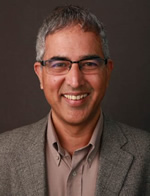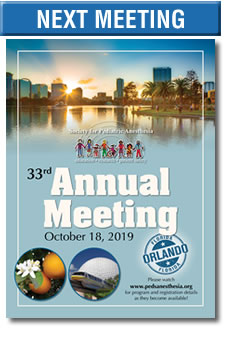SPA Meeting Reviews
Sunday Session I: Ground Control to Major Tom: Warnings, Workload, and Watchfulness
Reviewed by RJ Ramamurthi, MD, FRCA
Stanford Children’s Hospital
 |
Dr. Ramamurthi |
This session started with James P. Bagian, MD, PE (University of Michigan) describing the strategy of space industry – the ‘Goal’ is not just error prevention but extends to mitigation of harm. To quote the safety culture of astronauts, it’s shifting the priority from ‘ejection and escape pads’ to ‘crew survival’. The crew survival approach entails getting clear of the orbiter in flight, reaching earth’s surface intact and surviving until rescued. Taking that approach to other ‘high reliability organizations’ like healthcare, there is a need to simplify the process without losing the value and shifting the focus from ‘punishment’ to ‘performance improvement’.
Dr. Bagian also stressed that when identifying cause and effect of a critical incident, the need to find ‘whats and whys’ has higher value than the ‘who’. He then discussed in detail the principles of CRM in a healthcare environment.
The second speaker, Steven L. Moulton, MD (University of Colorado School of Medicine), is an innovator who talked about an FDA approved non-invasive device he has developed for early warning of hypovolemia before cardiovascular collapse.
This device was developed by applying feature extraction and machine-learning techniques to plethysmography and NIBP waveforms of healthy volunteers subjected to Lower Body Negative Pressure (LBNP). This simulates hemodynamic changes at varying stages of central volume. The device (CRI –M1) measures Compensatory Reserve Index (CRI), which is a measure of ratio of unit change in central volume over time in relation to depletion of entire blood volume.
The uniqueness, per Dr. Moulton, is that it can be interpreted without need for baseline values and the simple interface mimics the ‘fuel gauge’ of an automobile making it easy to interpret. Since the algorithm is so robust, the values are individualized as a balance of possible volume loss against inherent compensatory mechanisms for the given individual. This can help in individualizing therapy options according to patient needs.
The third speaker, Barbara Burian, PhD (NASA Ames Research Center), though not an anesthesiologist by profession, spoke like someone familiar with our work flow. As a NASA scientist with research experience on human factors in stressful environments, she eloquently described the day’s workflow of an anesthesiologist at the same time dispelling the perceived pride about multitasking ability with its potential for burnout and workload mismanagement.
In Dr. Burian’s words, ‘workload’ is a measure of time and effort needed to complete a series of tasks. The cognitive load needed in complex interpersonal teams with or without the availability of tools needed to improve efficiency must also be considered. She suggested trying the NASA-TLX app, which is a multidimensional assessment tool that rates perceived workload in order to assess a task, system, or team's effectiveness or other aspects of performance.
The final two speakers Anna Clebone, MD (University of Chicago) and James J. Fehr, MD (Washington University School of Medicine) used the podium exceptionally well – engaging the audience on the new and exciting mobile application – Pedi Crisis 2.0. Dr Clebone described the value of checklists in a time of crisis when memory can fail and responses can slow down. Pedi Crisis 2.0, according to Dr Fehr, is the most valuable contribution of SPA to members and non-members, second only to the unique social and professional networking opportunity of the SPA meeting.
For a short time, both presenters entertained the audience by conducting an on-stage Q and A session on the value and uniqueness of the Pedi Crisis 2.0 versus existing emergency algorithm applications like PALS. Pedi Crisis 2.0 is a cross- platform application created to reach around the world and lots of thought has gone into design to make it user friendly.
As a fitting end, 600 plus hours of voluntary contribution by Mike Anderson (Anderson Applications Limited) and Jeffrey Hottle (Hottle Interactive LLC), in designing the application was formally recognized. As spouses of current SPA members, they truly represent extended family centered commitment to the mission of our Society.






